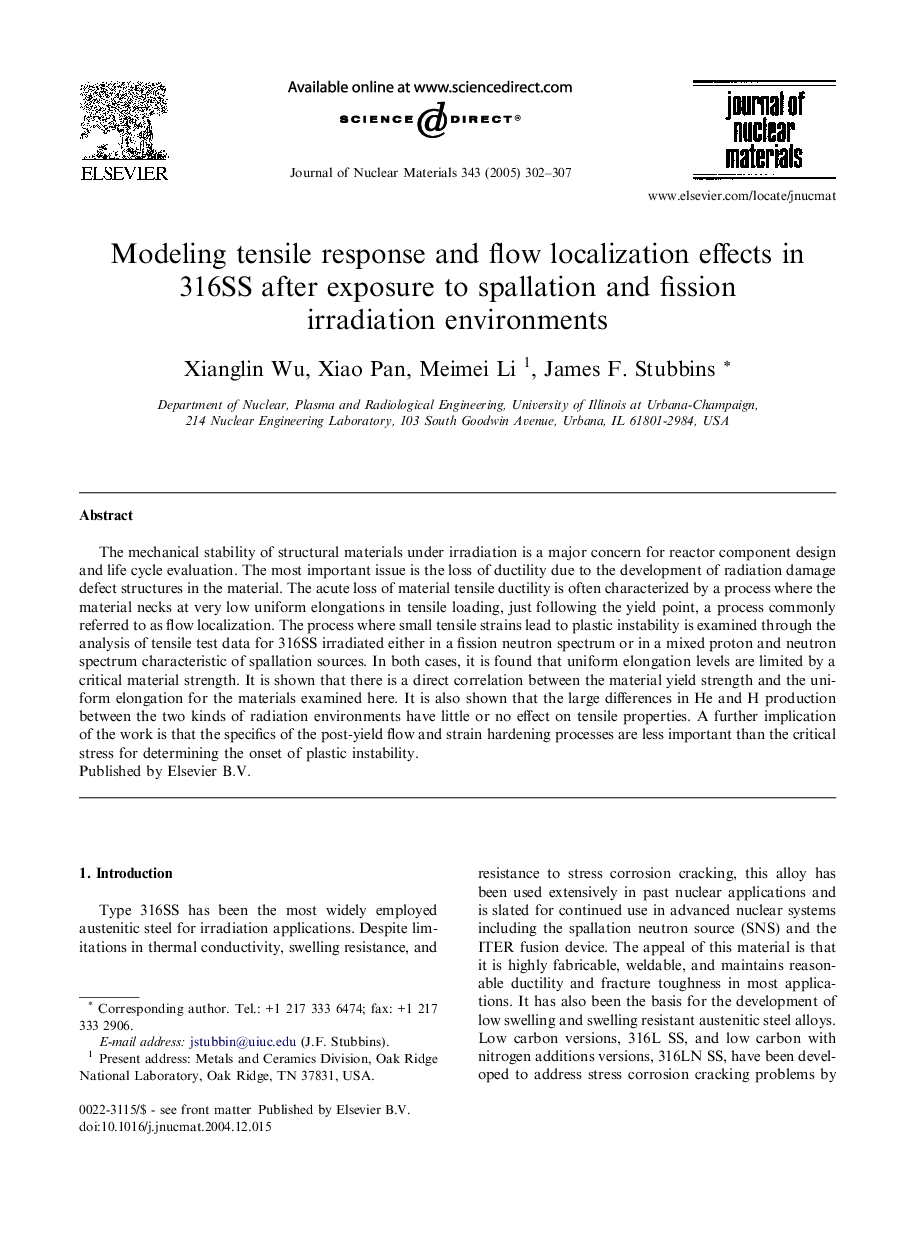| Article ID | Journal | Published Year | Pages | File Type |
|---|---|---|---|---|
| 9793718 | Journal of Nuclear Materials | 2005 | 6 Pages |
Abstract
The mechanical stability of structural materials under irradiation is a major concern for reactor component design and life cycle evaluation. The most important issue is the loss of ductility due to the development of radiation damage defect structures in the material. The acute loss of material tensile ductility is often characterized by a process where the material necks at very low uniform elongations in tensile loading, just following the yield point, a process commonly referred to as flow localization. The process where small tensile strains lead to plastic instability is examined through the analysis of tensile test data for 316SS irradiated either in a fission neutron spectrum or in a mixed proton and neutron spectrum characteristic of spallation sources. In both cases, it is found that uniform elongation levels are limited by a critical material strength. It is shown that there is a direct correlation between the material yield strength and the uniform elongation for the materials examined here. It is also shown that the large differences in He and H production between the two kinds of radiation environments have little or no effect on tensile properties. A further implication of the work is that the specifics of the post-yield flow and strain hardening processes are less important than the critical stress for determining the onset of plastic instability.
Related Topics
Physical Sciences and Engineering
Energy
Nuclear Energy and Engineering
Authors
Xianglin Wu, Xiao Pan, Meimei Li, James F. Stubbins,
